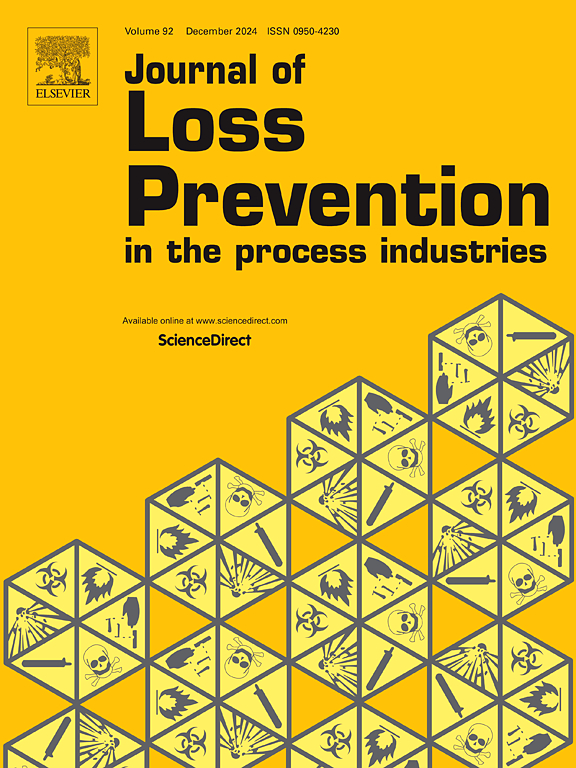A physics-informed data-driven model applied for gas dispersion
IF 4.2
3区 工程技术
Q2 ENGINEERING, CHEMICAL
Journal of Loss Prevention in The Process Industries
Pub Date : 2025-06-18
DOI:10.1016/j.jlp.2025.105703
引用次数: 0
Abstract
Gas dispersion calculations are essential for numerous applications. While the gas flow behaviour can be theoretically described by the Navier–Stokes equations, obtaining numerical solutions poses significant computational challenges, due to the demanding computational time involved. In this study, we tackle these challenges by leveraging the power of physics-informed neural networks (PINNs). PINNs integrate the underlying physics of the problem directly into the architecture of the neural network. By incorporating the Navier–Stokes equations within the framework of neural networks, our approach accounts for the fundamental physics governing gas dispersion. We use an in-house Computational Fluid Dynamics (CFD) code and commercial software to generate the required dataset. Our results demonstrate that the model is robust and capable of providing rapid solutions to gas dispersion problems. This efficiency is particularly noteworthy when compared to the considerable computational time required for traditional CFD calculations. Therefore, our approach offers a promising alternative for efficient and accurate gas dispersion simulations in process safety applications.
应用于气体分散的物理数据驱动模型
气体分散计算在许多应用中是必不可少的。虽然气体流动行为可以用Navier-Stokes方程在理论上描述,但由于涉及的计算时间要求很高,因此获得数值解会带来重大的计算挑战。在本研究中,我们通过利用物理信息神经网络(pinn)的力量来解决这些挑战。pinn将问题的底层物理直接集成到神经网络的体系结构中。通过在神经网络框架内结合Navier-Stokes方程,我们的方法解释了控制气体弥散的基本物理。我们使用内部计算流体动力学(CFD)代码和商业软件来生成所需的数据集。结果表明,该模型具有较强的鲁棒性,能够快速解决气体分散问题。与传统CFD计算所需的大量计算时间相比,这种效率尤其值得注意。因此,我们的方法为过程安全应用中高效、准确的气体分散模拟提供了一个有前途的替代方案。
本文章由计算机程序翻译,如有差异,请以英文原文为准。
求助全文
约1分钟内获得全文
求助全文
来源期刊
CiteScore
7.20
自引率
14.30%
发文量
226
审稿时长
52 days
期刊介绍:
The broad scope of the journal is process safety. Process safety is defined as the prevention and mitigation of process-related injuries and damage arising from process incidents involving fire, explosion and toxic release. Such undesired events occur in the process industries during the use, storage, manufacture, handling, and transportation of highly hazardous chemicals.

 求助内容:
求助内容: 应助结果提醒方式:
应助结果提醒方式:


